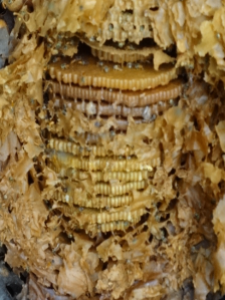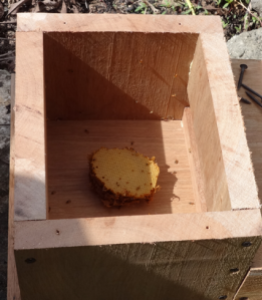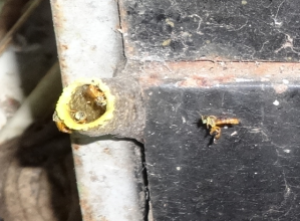
Gnome’s been trying to get those stingless bees in the Gnome boxes (TM) for ages. But of course, we’ve noticed that nothing on this farm listens to us or reads the same manuals. This lot of bees decided that our electricity disconnect box was just the thing for building a nest. The BEL guys came round to inspect our meter last week and discovered the sticky bee nest. Of course, we were told that we had to replace the box.

On the upside, we managed to get a litre of honey out of the box. 😉
So we ended up having to replace the meter base too because the door was broken…two expenses!! Of course Munchkin was none too pleased…these silly metal boxes actually do cost a bit of money. Then we had to arrange for the electrician and the BEL (Belize Electricity Ltd) guys to come at the same time because the power had to be switched off for the boxes to be replaced. Gnome:
“…how in Belize can you co-ordinate two different sets of people to come to your place at the same time…the mind boggles…”
(usually you can’t even organise an appointment with one person!)

Anyway, the conjunction of stars must have been absolutely bang-on perfect and they all turned up. They were all actually really helpful because we had a lot of spiky pandanus growing around the electricity meter and pole; they assisted in chopping down the over-grown (they are about 10 metres tall!!) obstructive plants. Luckily here in Toledo, everyone carries their own machete just in case there is grass or a plant to chop down. The BEL guys even got up on their cherry picker and cut some of the plant down for us. Thank-you, thank-you we really appreciated the extra help!! Every-one left with bananas from the farm and our hand-made soap.
We are glad that it all turned out well in the end. Look at the sticky mess the bees made:






























